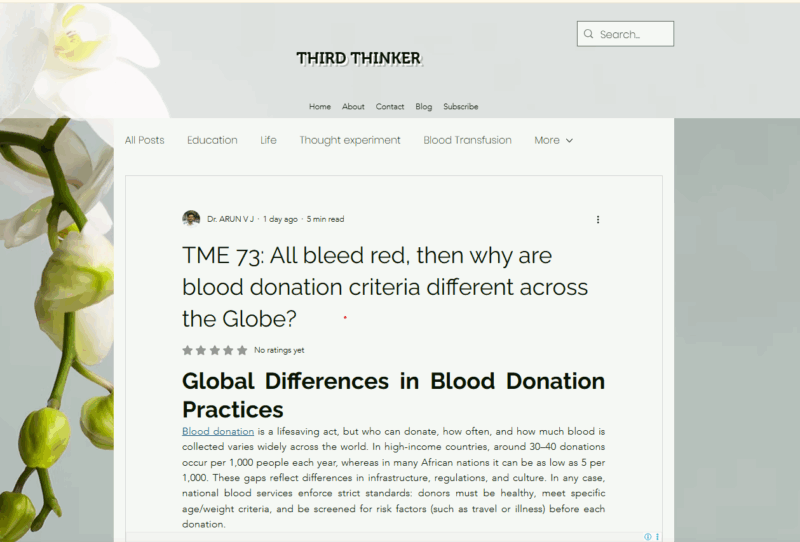
Arun V J Explains How Blood Donation Rules Differ Worldwide and Why Your Donation Saves Lives Everywhere
Dr. Arun V J, Member of ADRP: The Association for Blood Donor Professionals, posted on LinkedIn:
”Did you know blood donation rules change depending on where you live? All blood is red, but the criteria for donation varies across the globe.
In India, you can donate 450 ml if you weigh ≥55 kg, but only 350 ml if you weigh 45–50 kg.
In the US and EU, a standard donation is 500 ml.
Donation intervals differ: every 56 days in the US, every 12 weeks in the UK, and every 3–4 months in India.
Disease screening changes too: India routinely tests for malaria, while the US screens for Cytomegalovirus (CMV). Both test for HIV, Hepatitis B and C, and syphilis.
Apheresis donations (platelets/plasma) are even more varied:
US: platelets every 7 days (up to 24 times/year)
India: twice a week, up to 24 times/year
UK: plasma every 2 weeks
These differences exist because of:
– Physique and blood volume across populations
– Local disease prevalence
– Nutrition and recovery rates
– Regulatory frameworks
Yet, across all these rules, one truth stands out: blood is life-saving everywhere.
When you donate, you’re not just following a local guideline – you’re joining a global movement to save lives.
Click here to read more.”

Stay updated with Hemostasis Today.
-
Dec 18, 2025, 17:13Daria Camilli on EuroBloodNet and EHC Collaboration for Bleeding Disorders
-
Dec 18, 2025, 16:50Marie Cambot on Innovhem’s Quantification of The HbF/HbS Ratio for SCD
-
Dec 18, 2025, 16:26Yogesh Rathod on Hematological Issues and ICU
-
Dec 18, 2025, 16:09Carlos Doti: I’m Reminded Why ASH is Such a Powerful Close to The Year
-
Dec 18, 2025, 15:23Michael Hadley: Well-Timed ACC Statement Just Out in JACC Journals
-
Dec 18, 2025, 15:12Wolfgang Miesbach on Insights from Guy Young’s ASH2025 Session on Next-Generation Gene Therapy
-
Dec 18, 2025, 14:15Plasma-Derived Therapy for Hemophilia in The Updated European Medicines Agency’s Union List
-
Dec 18, 2025, 13:55Laurent Bertoletti: BAT-VTE is One of 7 Projects Funded Under the EFFECT Trial Call!
-
Dec 18, 2025, 13:34Alexandru Stieber Explores VEXAS Syndrome
